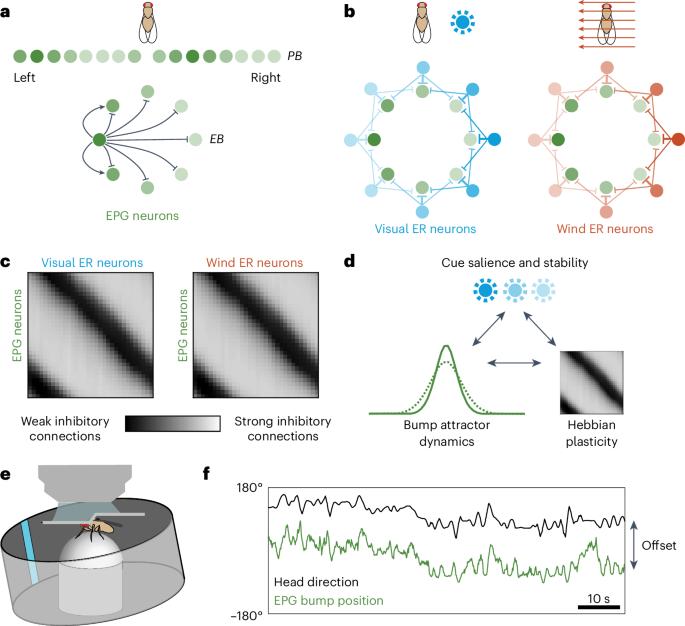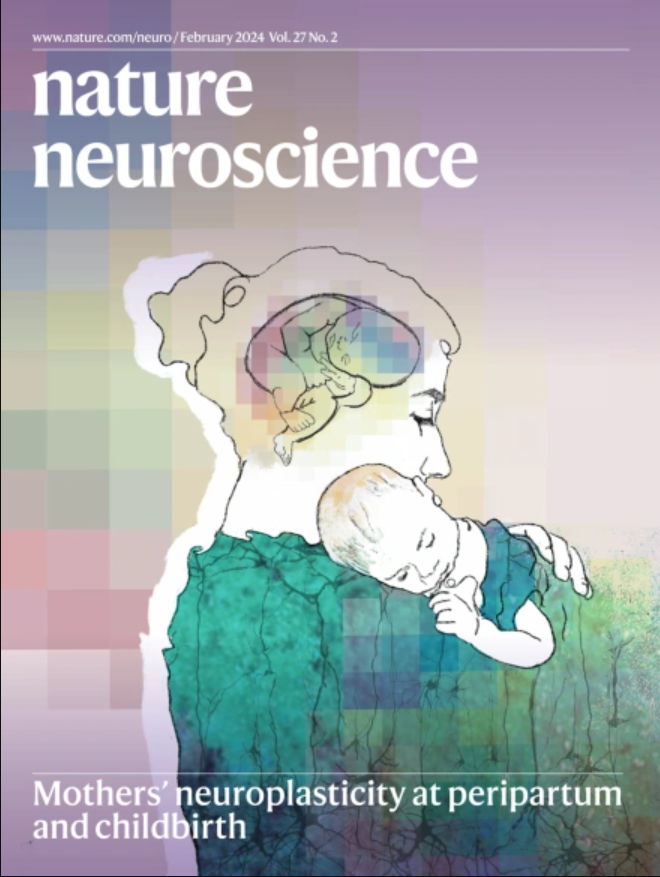头部方向神经表征中的多模态线索整合与学习
IF 20
1区 医学
Q1 NEUROSCIENCES
引用次数: 0
摘要
导航需要我们考虑多个不同信息水平的空间线索,并学习它们的空间关系。在此,我们研究了果蝇头部方向系统的这一过程,该系统具有环形吸引器和头部方向地形图的功能。利用群体钙成像和多模态虚拟现实环境,我们发现增加线索信息量可以提高编码精度,并产生更窄和更高的活动凸起。当线索冲突时,信息更丰富的线索会发挥更大的作用。熟悉的球杆权重更大,用于指导不熟悉的球杆的重新映射。当线索信息较少时,它更容易被重新映射以应对线索冲突。所有这些结果都可以用一个具有可塑性感觉突触的吸引子模型来解释。我们的发现为大脑如何通过推理和学习来组装空间表征提供了一种机制解释。本文章由计算机程序翻译,如有差异,请以英文原文为准。


Multimodal cue integration and learning in a neural representation of head direction
Navigation requires us to take account of multiple spatial cues with varying levels of informativeness and learn their spatial relationships. Here we investigate this process in the Drosophila head direction system, which functions as a ring attractor and a topographic map of head direction. Using population calcium imaging and multimodal virtual reality environments, we show that increasing cue informativeness improves encoding accuracy and produces a narrower and higher bump of activity. When cues conflict, the more informative cue exerts more weight. A familiar cue is weighted more heavily and used to guide the remapping of a less familiar cue. When a cue is less informative, it is remapped more readily in response to cue conflict. All these results can be explained by an attractor model with plastic sensory synapses. Our findings provide a mechanistic explanation for how the brain assembles spatial representations through inference and learning. Basnak et al. show that particularly informative spatial cues produce a higher and narrower bump of activity in the Drosophila head direction system. More informative cues can instruct the remapping of other cues to produce a self-consistent map.
求助全文
通过发布文献求助,成功后即可免费获取论文全文。
去求助
来源期刊

Nature neuroscience
医学-神经科学
CiteScore
38.60
自引率
1.20%
发文量
212
审稿时长
1 months
期刊介绍:
Nature Neuroscience, a multidisciplinary journal, publishes papers of the utmost quality and significance across all realms of neuroscience. The editors welcome contributions spanning molecular, cellular, systems, and cognitive neuroscience, along with psychophysics, computational modeling, and nervous system disorders. While no area is off-limits, studies offering fundamental insights into nervous system function receive priority.
The journal offers high visibility to both readers and authors, fostering interdisciplinary communication and accessibility to a broad audience. It maintains high standards of copy editing and production, rigorous peer review, rapid publication, and operates independently from academic societies and other vested interests.
In addition to primary research, Nature Neuroscience features news and views, reviews, editorials, commentaries, perspectives, book reviews, and correspondence, aiming to serve as the voice of the global neuroscience community.
 求助内容:
求助内容: 应助结果提醒方式:
应助结果提醒方式:


